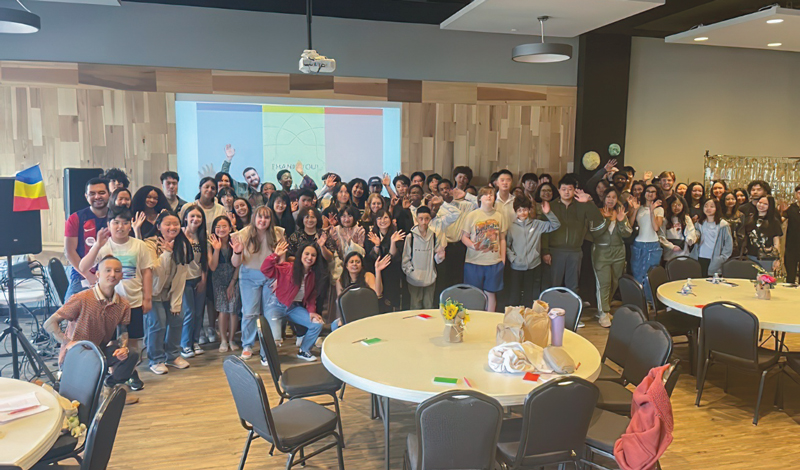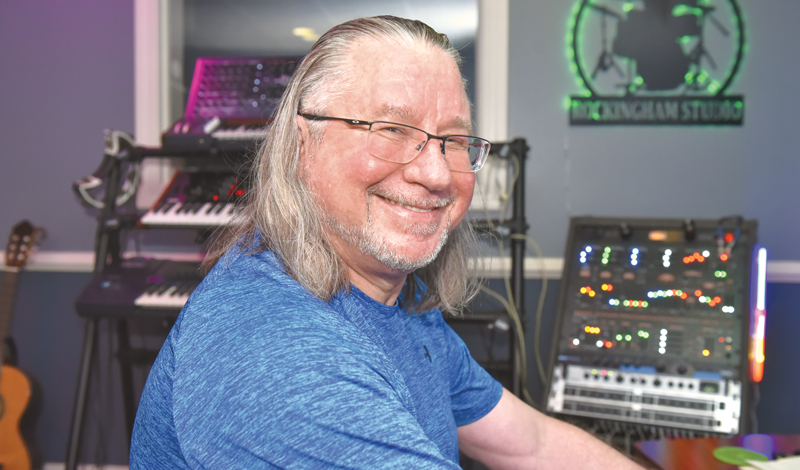by Bob Ham
Atlanta
“How are the young men?”
The question was put to me by a senior in faith and took me by surprise. I wracked my brain but had no answer.
Nine—count ‘em, nine!— had shown up the year before for our young men’s meeting in the summer of 2023. A real accomplishment for a chapter that had come out of the pandemic with hardly any young men still engaged. We’d gotten them together, all nine, and then, a couple months later, eight had vanished.
Here we are, again, I thought. We brought together these youth, and then let the fruits of our labor go to waste. No follow-up! It was time for this to change. Without future leaders, we would not advance kosen-rufu. It was time for me, as the men’s leader for Northeast Georgia Chapter, to deepen my prayer to the Gohonzon. Within the month, things started to move.
I was discussing with one of the men’s division members in my chapter, a professor at the local university. Earlier that month, he started really standing up in his district, bringing his two boys. “Listen,” he told me, “I’ve got a student who’s really interested in Buddhism. He knows I’m Buddhist, but as his professor, I can’t engage.”
“If he wants to talk Buddhism,” I said, “I’m your guy.”
Connecting with this young man over the phone, I learned that he was both working and attending university full time. And yet, by the time we got together to chant at my place, he’d already driven down to the Atlanta Buddhist Center and taken the introductory exam. Where did this guy come from? I wondered. We got into a rhythm, chanting at my place every Wednesday. That November, he received the Gohonzon.
I attribute to him a lightbulb moment. At his birthday dinner, he mentioned he’d just seen Chicago, a horn-heavy rock ’n’ roll band whose popularity peaked in the ’80s. “Chicago!” I exclaimed. “That’s old school, that’s my generation. You play the horn or something?” He played the sax. That’s when the lightbulb went off: He’s not our only musician.
Music, I should mention, has always been my passion. And music was key to the development of my faith. I joined the SGI in 1986, a frustrated starving artist cycling through one band breakup after another. Genius and egoism, creativity and recklessness—they all seemed positively correlated. The most promising bands were the quickest to implode.
As soon as I joined the SGI, I became a part of its Brass Band as a drummer. There were just three of us, at first, but then we acquired a fourth, a guy without any classical training whatsoever but who played with passion. I remember he had serious health challenges he was fighting to overcome. As Ikeda Sensei concludes in his “Precepts for Brass Band”: “I would like to say that your spirit should transcend vanity as well as musical techniques and ability. The sound of the Brass Band should be the rhythm of faith. It must roar with the sound of passion, as if to crush the angry waves of the ocean” (December 2018 Living Buddhism, p. 33).
We went from four, to five, eventually reaching our high watermark at 25. I discovered in this group of musicians a unity and depth of purpose I’d never encountered in any other.
Shortly after my lightbulb moment, I got a call from one of the men’s leaders about a young man who’d just moved into his district, a former youth leader who was struggling in his music career just like I had in my youth. We immediately set up a visit.
Speaking with him, it was clear he was struggling. We embraced him, chanted daimoku and took him to lunch, by the end of which his attitude had changed completely. A fire had been sparked—he was ready to wage a faith battle toward March, when, across the country, chapters would hold youth peace festivals. He accepted chapter leadership and went into what can only be called “turbo-mode,” visiting as many as 10 young men in a week. Even his car breaking down in the middle of a visit spree didn’t slow him down—he called to tell me, simply, “I’ve still got guys to visit!” I drove to where he was. “Address?” I asked as he buckled up.
Meeting one guy after another, it became clear: We had to have a Brass Band performance for our youth festival. Among our young men was a drummer, a pianist, a saxophonist. Most had never received technical training but were excited by the prospect of a band. In late January, eight attended our first rehearsal.

Our young men’s division attendance goal for this upcoming festival was 20. As a chapter team, all four divisions completely united, embarking on a massive daimoku and home-visit campaign. It paid off. Far exceeding our expectations, we gathered 80 youth, including 32 young men. A historic accomplishment for Northeast Georgia. Listening to “Forever Sensei” played powerfully by our own Brass Band, I was struck by the feeling—the certainty—that I was bearing witness to a new beginning for our chapter.
Interestingly, while making all of these efforts, I got a call from an original band in search of a drummer. Yes, I’m back at it—with no delusions of grandeur—for the sheer joy of playing. My rehearsals take place in the neighborhood of many of our Brass Band members, so I visit them on the way—checking in to understand how they’re doing and what they’d like to do going forward. As it happens, one wants to write an original score for each instrument.
So, how are the young men of Northeast Georgia doing, you ask? Crushing it!
You are reading {{ meterCount }} of {{ meterMax }} free premium articles

